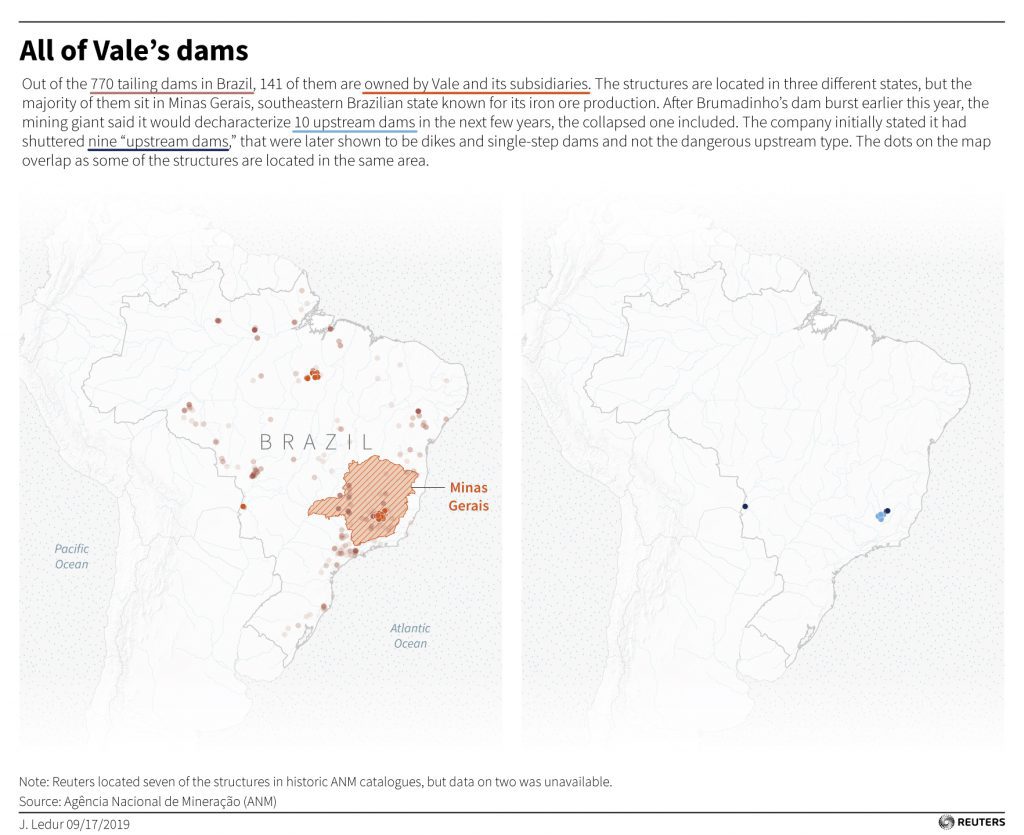The Global Tailings Review, an
initiative launched by the United Nations and ethical investors following tragedy
at Vale’s Corrego do Feijão mine in Brazil early this year, has kicked
off a six-week public consultation on a draft of global standards to
improve mine safety.
The push for worldwide rules
governing the construction and maintenance of mining waste storage facilities aims
to prevent any repeat of the tailings dam disaster that in January hit the
state of Minas Gerais, for the second time in three years, and which killed 300
people.
The review, backed by the
International Council on Mining and Metals (ICMM), the UN Environment Programme
(UNEP) and the Principles for Responsible Investment (PRI), has been in
the works since March this year.
The ICMM, a London-based industry
group representing 27 major mining companies, had vowed
earlier to set an independent panel of experts in charge of developing global
standards for tailings facilities.
The goal, according to expert Bruno
Oberle, who is chairing the review, is to decide on standards to be published
in 2020.
“The public consultation phase
allows for critique, feedback and suggestions from others that both informs and
enriches the draft, he said
in a statement.
Oberle noted that the document was part
of a wider global drive to strengthen performance on tailings management, adding
that the requirements of the draft could complement such initiatives.
The consultation he leads includes an online survey that has been translated into seven languages.

A parallel global inquiry into
mining waste storage systems of more than 700 resources companies, launched in April by the Church of England (CoE) and
fund managers, recently revealed that about
a tenth of those structures have had stability issues.
Those results, however, are
considered partial, as they only reflect disclosures from less than half
of the 726 companies contacted following Brumadinho dam’s collapse.
Currently there are no set of
universal rules defining exactly what a tailings dam is, how to build one and
how to care for it after it is decommissioned.
Some previous effort in that
direction includes the World Mine Tailings Failures, an online database that aims
at exposing the cause of tailing dams disasters, giving direction on how to
prevent them.
There are about 3,500 tailings dams
around the world. Unlike the ones used to build reservoirs or hydroelectric
projects, tailings dams are not usually made from reinforced concrete or stone.
They are mostly constructed from the waste material left over from mining
operations, which — depending on the type of mine — can be toxic.
Only three countries in the world
ban upstream dams — Chile, Peru and now Brazil. Chile, the world’s No.1 copper
producer, also regulates the minimum distance between dams and urban centres.
But the nation still has 740 tailings deposits, only 101 of which are active,
with the rest abandoned or inactive, according to data from mining agency Sernageomin.
